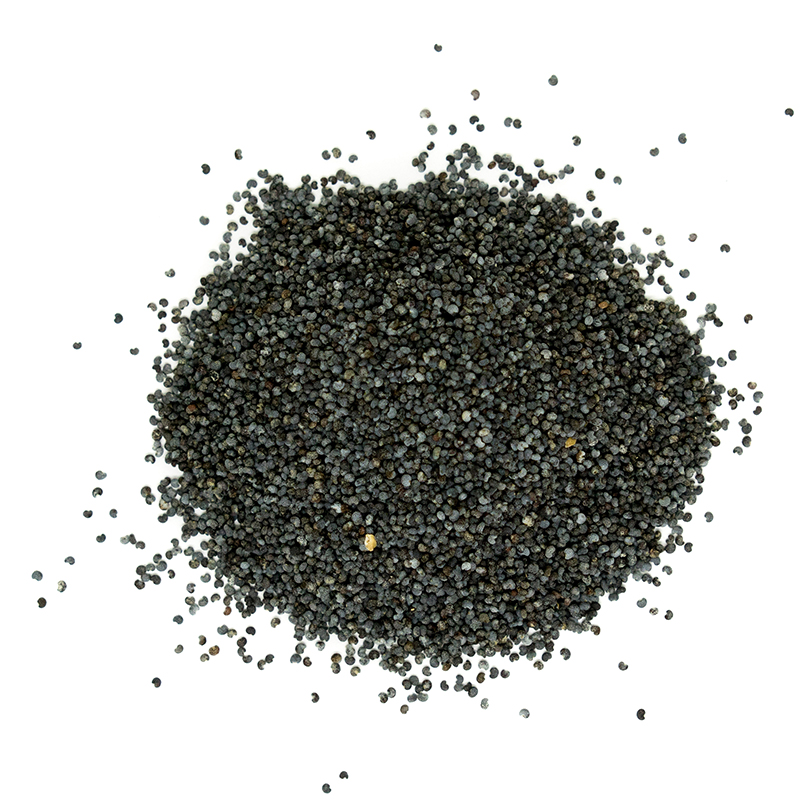-
Description
The poppy plant is a perennial, with fuzzy bluish-green stems that grow to a height of 3 to 6 feet. Poppy seeds are about 1 mm long. The colour ranges from white, blue to black and the seeds have a delicious nutty flavour. These are organically grown poppy seeds.
-
Uses
Organic poppy seeds are usually used as a topping for rolls, bread, cookies, and baked goods, or as a garnish. The crushed seeds mixed with sweetening are used as a filling for coffee cakes and pastries. Raw poppy seeds can also be used in salads.
-
Storage
Product should be stored in a dry, cool area with a temperature below 15˚C and 60% relative humidity. Optimum shelf life is 6 months.
-
Nutrition
Nutrition Facts Per 3 tbsp (30 g) Amount % Daily Value Calories 160 - Fat 12 g 17% Saturated Fat 1.5 g - + Trans Fat 0 g 7% Carbohydrate 8 g - Fibre 6 g 21% Sugars 1 g 1% Sugar Alcohol - - Protein 5 g - Cholesterol 0 mg - Sodium 10 mg 0% Potassium 225 mg 5% Calcium 450 mg 35% Iron 3 mg 17%
| SKU | Unit Size |
|---|---|
| 80401 | 12 x 50 g |
| 80403 | 12 x 200 g |
-
Description
-
Uses
-
Nutrition
-
Storage
-
The poppy plant is a perennial, with fuzzy bluish-green stems that grow to a height of 3 to 6 feet. Poppy seeds are about 1 mm long. The colour ranges from white, blue to black and the seeds have a delicious nutty flavour. These are organically grown poppy seeds.
-
Organic poppy seeds are usually used as a topping for rolls, bread, cookies, and baked goods, or as a garnish. The crushed seeds mixed with sweetening are used as a filling for coffee cakes and pastries. Raw poppy seeds can also be used in salads.
-
Nutrition Facts Per 3 tbsp (30 g) Amount % Daily Value Calories 160 - Fat 12 g 17% Saturated Fat 1.5 g - + Trans Fat 0 g 7% Carbohydrate 8 g - Fibre 6 g 21% Sugars 1 g 1% Sugar Alcohol - - Protein 5 g - Cholesterol 0 mg - Sodium 10 mg 0% Potassium 225 mg 5% Calcium 450 mg 35% Iron 3 mg 17% -
Product should be stored in a dry, cool area with a temperature below 15˚C and 60% relative humidity. Optimum shelf life is 6 months.
